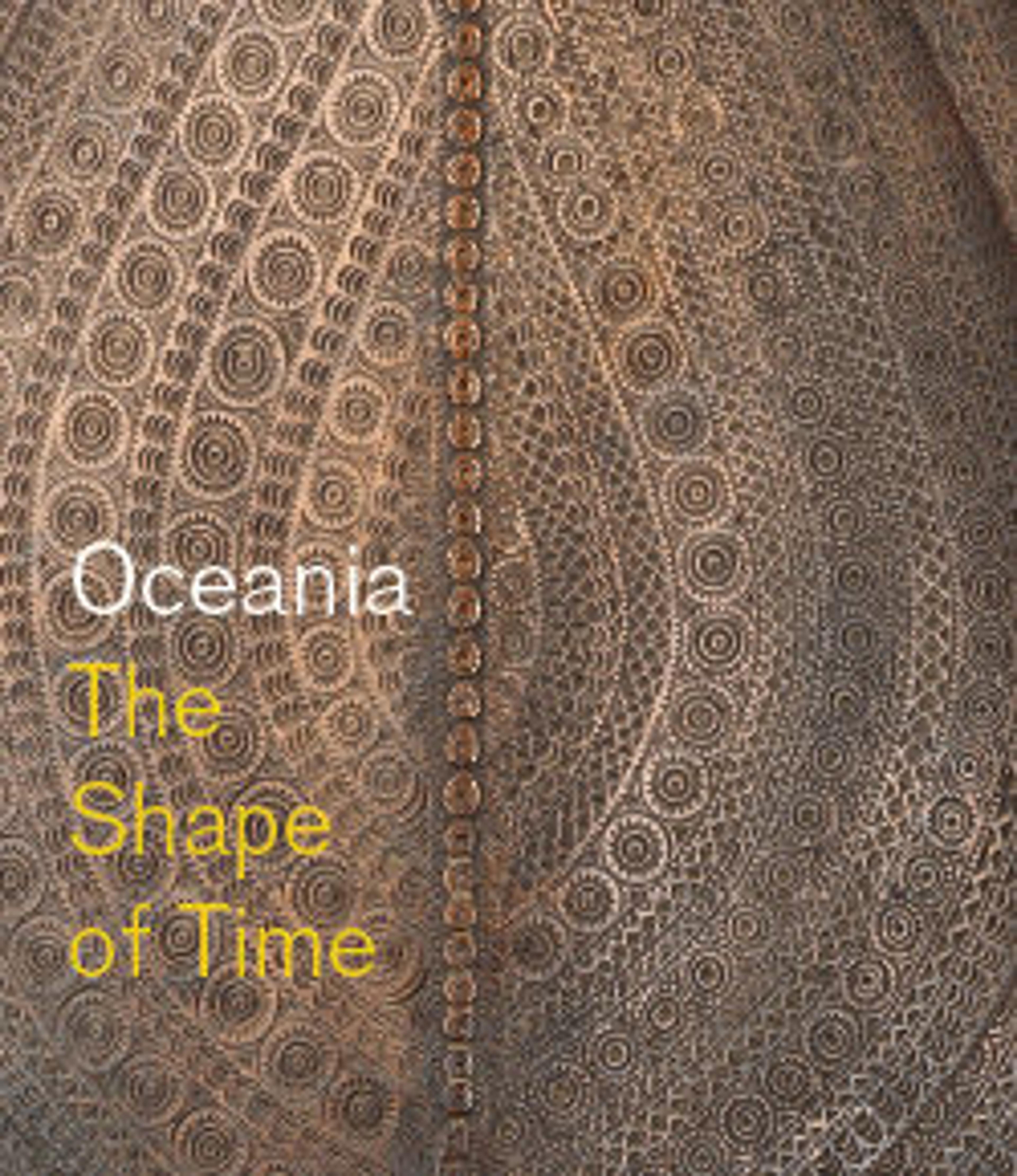Riji, jakoli, or longkalongka (engraved pearl shell) with belt
Pearl shell was the highly prized focus of ritual and exchange networks in Australia. Its glistening iridescent qualities embody the shimmer of water, rain, and lightning, evoking ideas of spiritual well-being and ancestral connection. Engraved pearl shell pendants were given to boys during rites that marked their transition to adulthood and were predominantly used and worn by men during ceremonies, attached by belts or necklaces of hair string, with the power to bring rain or heal the sick. Known by a variety of local names (including riji, jakuli, longkalongka) they were, and in many areas still are, exchanged along a vast network of overland trade routes that extends along the western coast and across the vast desert interior as far as Australia’s southern shore, more than a thousand miles away. Carved from the shell of the gold-lipped pearl oyster (Pinctada maxima), each is engraved with a series of angular geometric motifs which are filled with red ocher and fat, or powdered charcoal to highlight dynamic designs. These linear elements meander across the surface of the lustrous inner lip of the shell and are typically composed of three parallel lines which flow and interlock to create animated designs. The geometry of these interlocking zig-zags and meandering lines indicate the movement of water, so vital to life, in its many manifestations: the rain of storm clouds, the ebb and flow of tides, and the tracks of ancestral beings such as the Lightning Snake across the landscape.
Artwork Details
- Title: Riji, jakoli, or longkalongka (engraved pearl shell) with belt
- Artist: Aboriginal artist
- Date: late 19th–early 20th century
- Geography: Australia, Kimberley region, Western Australia
- Culture: Western Kimberley
- Medium: Pearl shell, human hair, ocher
- Dimensions: Including belt: H. 20 × W. 4 15/16 × D. 1 3/8 in. (50.8 × 12.5 × 3.5 cm)
- Classifications: Shell-Costumes, Shell-Ornaments
- Credit Line: The Michael C. Rockefeller Memorial Collection, Bequest of Nelson A. Rockefeller, 1979
- Object Number: 1979.206.1540
- Curatorial Department: The Michael C. Rockefeller Wing
More Artwork
Research Resources
The Met provides unparalleled resources for research and welcomes an international community of students and scholars. The Met's Open Access API is where creators and researchers can connect to the The Met collection. Open Access data and public domain images are available for unrestricted commercial and noncommercial use without permission or fee.
To request images under copyright and other restrictions, please use this Image Request form.
Feedback
We continue to research and examine historical and cultural context for objects in The Met collection. If you have comments or questions about this object record, please contact us using the form below. The Museum looks forward to receiving your comments.
